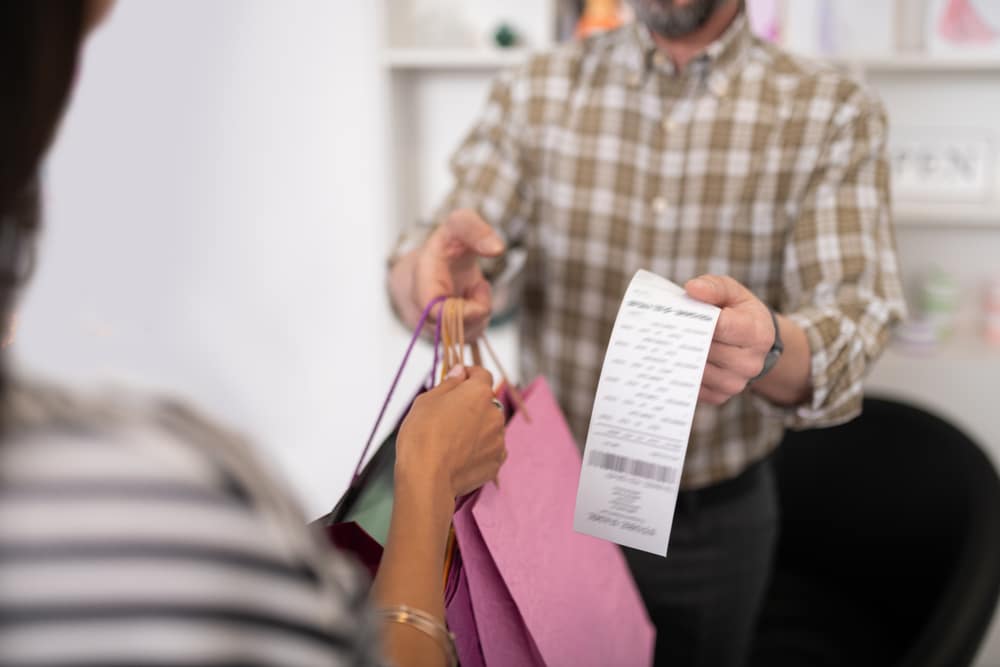Buy online pickup in-store, also known as BOPIS, is an omnichannel eCommerce strategy whose name is pretty self-explanatory—consumers buy products online, and then pick up their purchased items in-store, offering previously unavailable speed and convenience. Continue reading “BOPIS eCommerce is the next wave in omnichannel marketing”
Category: b2b
Leveraging beacon mobile marketing technology to increase awareness and sales
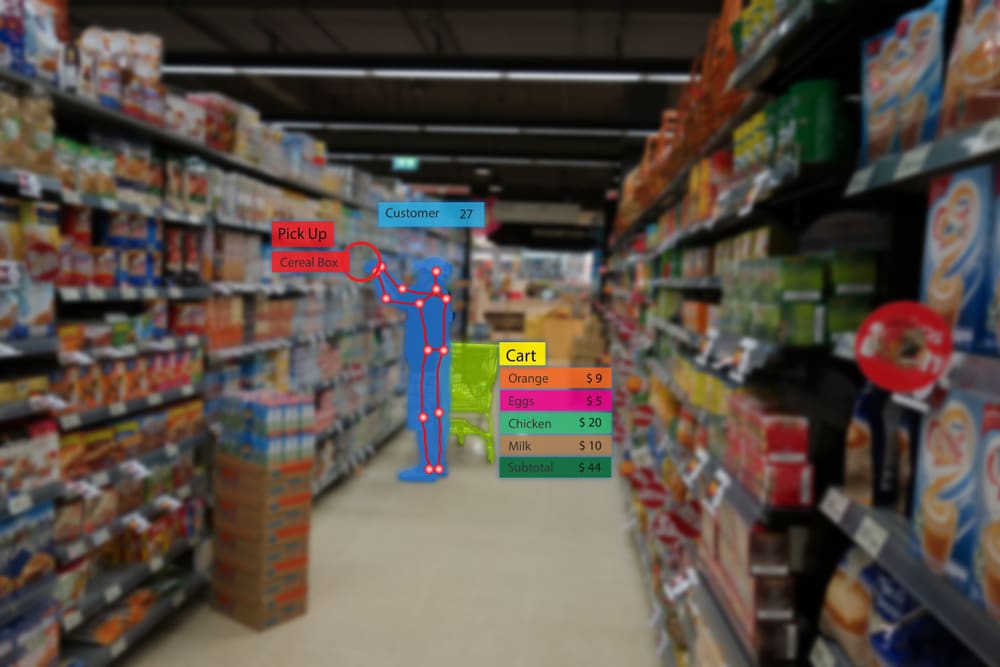
Beacon mobile marketing debuted in 2013 when Apple announced iBeacon technology would be part of their iOS 7 software at the World Wide Developer Conference. Continue reading “Leveraging beacon mobile marketing technology to increase awareness and sales”
6 essential KPIs for retail marketing in the digital age

6 essential KPIs for retail marketing in the digital age
Key performance indicators (KPIs) are the foundation of any successful retail marketing strategy. After setting specific, measurable, achievable, realistic, and timely goals and putting the right measurement tools in place, the marketing team charts progress based on goal forecasting and benchmark achievement over time. When thinking about which KPIs matter for you and your company, annual revenue and conversions may be the first two metrics that come to mind. However, the key KPIs for retail marketing include a mix of online and offline metrics. When analyzed together, marketers can gain an in-depth understanding of how well their omnichannel strategies are working. The data can also be used to finetune and personalize future campaigns. There is an endless amount of trackable data, but the most essential KPIs for retailers include: digital traffic, foot traffic, cart size, in-aisle engagement, overall brand awareness, and return on investment (ROI).
Digital Traffic
It’s vital to measure how many people are visiting your retail website. Traffic may fluctuate from month to month depending on the season, but should trend upward year-over-year, verifying the success and health of your site.
Knowing from which source users are visiting your site is equally important—whether from pay-per-click (PPC) ads, organic search, or social media referrals—so the company can double-down on successful strategies and discard or revamp the rest.
Consumers use multiple channels to shop, so it’s also wise to compare online vs. offline traffic to better understand how a digital presence impacts physical retail. The impact of eCommerce can be valued by breaking down traffic by zip code.
There are endless strategies for increasing web traffic, but the best produce long-term, sustainable growth. While PPC ads can give retailers a quick bump in sales and are often included in marketing mixes, far too many retailers place too much stock in this short-lived strategy. When a company stops investing in paid ads, the benefits are instantly lost. On the other hand, investing in content marketing and search engine optimization (SEO) will continue to produce growth and results over the years.
The following online tactics represent best practices for driving retail web traffic:
- Advertise referral bonuses on the website and social media channels.
- Produce more consistent, diverse, and optimized content.
- Optimize the website with well-researched and competitive long-tail keywords.
- Encourage links to the website through third-party publications, press releases, and networking.
- Ensure digital directory and review sites have accurate and adequate information.
- Optimize the website for mobile devices.
- Partner with third-party shopping apps like Shopkick to increase the company’s footprint within new audiences.
- Automate retargeting campaigns based on user behaviors like leaving items in shopping carts or browsing the site.
Physical KPIs for Retail Marketing
Though we’ve been living in “the Digital Age” since the 1970s, eCommerce will likely never replace the physical brick-and-mortar shopping experience. In fact, 90% of sales still occur in stores.
Consumers still like to physically handle products before purchasing, browse all available options, ask the advice of store personnel, and have items immediately available after purchasing. Over a third of shoppers enjoy “retail therapy” as a way of destressing, and they tend to spend more than online shoppers.
In the past, it was a bit more of a complex process to gain personalized data on physical retail shoppers. However, advancements in technology have brought about tools like smartphones, beacons, smart mirrors, smart carts, interactive screen displays, and augmented reality headsets that can be utilized to bridge gaps between data collection and physical shopping.

Foot Traffic
Foot traffic refers to the number of people who walk into the store. This metric can be measured using camera surveillance, heat maps, and retail analytics software. It’s worth measuring store traffic to gauge how many are browsing vs. buying.
Are you stocking what people need? Is a recently launched marketing campaign or a new product launch driving greater store visits? Are your window displays or geolocation-based text campaigns bringing local traffic in off the street?
There are many ways to drive foot traffic:
- Increase exterior curb appeal.
- Implement buy online pick up in store (BOPIS).
- Hold local events.
- Advertise on Google Local.
- Send location-based texts.
- Run flash sales during slow times.
- Show real-time inventory online.
- Partner with a shopping loyalty app like Shopkick that encourages and rewards shoppers for visiting a store.

Cart Size
Foot traffic refers to the number of people who walk into the store. This metric can be measured using camera surveillance, heat maps, and retail analytics software. It’s worth measuring store traffic to gauge how many are browsing vs. buying.
Are you stocking what people need? Is a recently launched marketing campaign or a new product launch driving greater store visits? Are your window displays or geolocation-based text campaigns bringing local traffic in off the street?
There are many ways to drive foot traffic:
- Increase exterior curb appeal.
- Implement buy online pick up in store (BOPIS).
- Hold local events.
- Advertise on Google Local.
- Send location-based texts.
- Run flash sales during slow times.
- Show real-time inventory online.
- Partner with a shopping loyalty app like Shopkick that encourages and rewards shoppers for visiting a store.

At-Shelf Product Engagement
Forward-thinking retailers explore how consumers engage with particular products in-aisle. 3D-eye-tracking technology can gauge visual attention, heat sensor mapping can reveal popular zones, and mobile tracking can identify how people engage with particular products or aisles.
Where do shoppers go first when they arrive in-store? Are they lingering down certain aisles? Which shelves or displays capture the most sustained attention? Which items do people scan with smartphones to get more information?
To increase product engagement at-shelf:
- Gamify the shopping experience.
- Activate mobile barcode scanning.
- Text offers using near-field communication (NFC) technology.
- Hold in-store product demos.
- Engage with a rewards app.
- Show location-based in-app videos.
- Use screens displays to provide info.
- Bundle offers to drive new product trial
Shopkick is an innovative platform used to foster brand loyalty, as it rewards consumers for engagement, not just purchases. It also works across channels, whether a shopper wants to browse or buy online or in-store.
When eBay partnered with Shopkick, they were able to increase their app install rate by 6%, boost their new audience participation rate 62%, and achieve an 18% repeat-purchase rate.
Best of all, Shopkick rewards with points instead of immediate discounts, so there is no need to worry about diluting profit margins or devaluing your brand.
Brand Awareness
Brand awareness may be particularly salient if you’re launching a new product or just starting out. However, understanding if and how consumers are aware of your brand is critical to understanding which marketing strategies are successful, and which need to be improved upon.
The starting point for measuring awareness can be found in Google Analytics data, which breaks down website traffic based on source. Consumer surveys are another way to track awareness of a retail brand.
Brand awareness can be measured in a myriad of ways—website/foot traffic, branded search prevalence, the number of backlinks, overall share of market voice, social media likes/comments/mentions, and even competitive comparisons.
To increase brand awareness, retailers can:
- Run native ads and social media ads.
- Produce fun and informative videos.
- Partner with influencers for reviews and links.
- Hold offline events and cross-promotions.
- Redesign company colors, logos, and brand images.
- Advertise in mobile shopping apps to expand reach.
One metric to always keep in mind when analyzing a marketing program’s effectiveness is the ROI. No one wants to spend more money to advertise than what is necessary to capitalize. Campaigns with the best ROI tend to leverage partnerships, personalization strategies, and make use of digital efforts like SEO, content, email, and mobile.
Tracking KPIs for retail marketing has gotten easier with customer relationship management software and the wide plethora of digital tools at marketers’ disposal, but it can be overwhelming for retailers to know where to begin. Many companies work with third-party marketers, SEO content firms, and consultants to assess their current conditions and gain campaign traction. Partnerships are yet another way to turbocharge a retail marketing strategy and earn a significant ROI.
Shopkick offers partners actionable first-party data that can help them track key metrics (foot traffic, at-shelf engagement, demographics/psychographics, etc.) in-store in real-time. This data allows our partners to fill gaps in the consumer shopping journey and make more insightful marketing decisions. The digital age is not slowing down; now is the time for retailers to adapt to the changing retail landscape and integrate technology into their marketing strategies.
Shopkick is a mobile shopping rewards app that can help you track valuable KPIs for retail marketing to measure the success of your advertising campaigns. Read our partners’ success stories to see how we’ve helped them achieve a 4-6x ROI, then contact us to get started on your campaign.
2021 Shopping Outlook: Most Consumers Say the Pandemic has Changed Their Shopping Habits Forever

Shopkick survey finds Gen Z is most optimistic about the new year
Gift card marketing strategies’ importance in the digital age of retail

Every year, especially around the holidays, many consumers struggle with a common problem: what to buy for friends and family. Continue reading “Gift card marketing strategies’ importance in the digital age of retail”
What this year’s surge in online holiday shopping means for retailers

Consumers worldwide have greatly increased their online spending in 2020, in large part due to COVID-19. Continue reading “What this year’s surge in online holiday shopping means for retailers”
COVID-19 holiday shopping patterns provide valuable retail marketing insights

Make no mistake—consumers still want to buy gifts this holiday season, COVID-19 or not.
Continue reading “COVID-19 holiday shopping patterns provide valuable retail marketing insights”
3 ways to boost your B2C digital marketing strategy
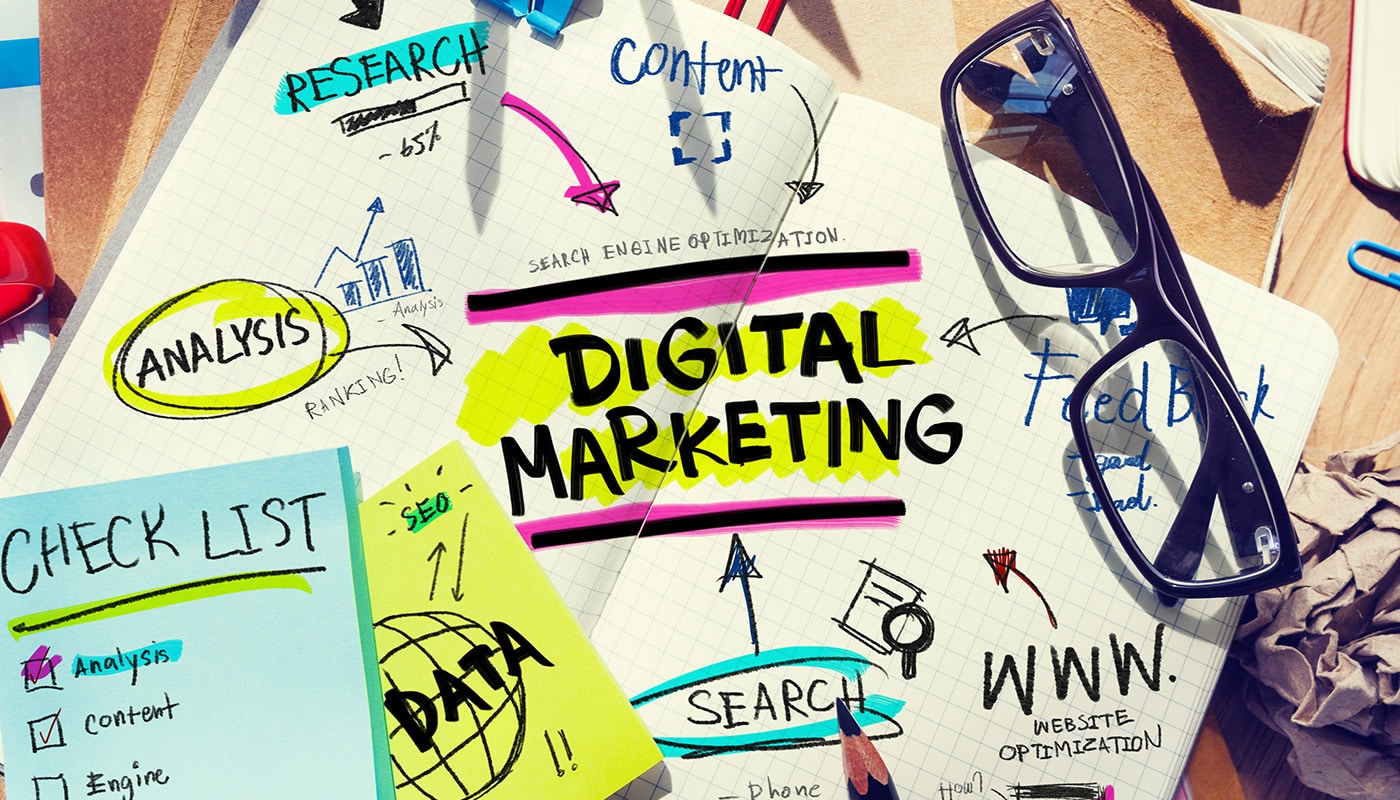
3 ways to boost your B2C digital marketing strategy
On the other hand, B2C customers can be frugal or impulsive. They are more apt to making their purchasing decisions emotionally rather than logically. While B2B clients will want to see immediate value or return on investment (ROI) from their purchases, B2C customers may be more interested in gamification, entertainment, and VIP perks offered as exciting parts of the buyer’s journey, though a value-rich deal certainly adds to the fun.
While it may seem to be easier marketing to consumers compared to businesses, B2C strategies have a tendency to get stale quickly and need constant optimization. If your website traffic is stagnating, your email list isn’t growing, or your number of repeat eCommerce transactions fails to increase month over month, it is probably time to finetune your B2C digital marketing strategy. To improve your strategy’s performance, you can simplify the decision-making process to help consumers overcome mental fatigue and cut through the clutter; focus on taking transactional relationships to the next level by cultivating a better brand experience; and drive better brand awareness to reel in a stream of new prospects.
Simplify Decision-Making.
Cornell University found adults make about 35,000 conscious decisions per day, including over 226 decisions related to food.
Decision-making fatigue is a state of low willpower caused by investing effort into making too many choices. Consumers end up avoiding decisions altogether or making spontaneous decisions in a superficial manner, which can ultimately affect purchase conversion.
To combat this, marketers can help shoppers cut through the clutter by offering relevant product information through multiple mediums. For example, Shopkick—a top-performing omnichannel loyalty mobile app—allows partnering retailers and brands to interact with users in different ways all along the path to purchase.
- Need Recognition — Know what pain points your consumers face. Develop content based on these problems, pitching how your products or services make the perfect solution.
- Information Search — Build comparison charts with popular alternatives to show where you differ. Create videos showcasing your products or services in action compared to competitors.
- Remove Obstacles — Aim to alleviate or remove obstacles to purchasing, such as time, money, convenience, return and exchange policies, brand loyalty, or unfavorable brand perceptions.
- Simplify Selection — If possible, reduce the number of product or service choices offered through consolidating, rotating offers seasonally, or showing personalized option menus.
- Final Push — Make sure your website is optimized with basic product, price, and location information. Product samples, coupons, or rewards provide an added incentive to try.
Go Beyond Single Transactions.
Transactional marketing focuses on increasing efficiency and volume at the point-of-sale through four P’s: product, pricing, placement, and promotion. The emphasis is more on alleviating obstacles related to selling rather than cultivating a long-term relationship with prospects. Once a transaction is completed, there is typically no further interaction with the customer.
To boost your B2C marketing efforts, focus on keeping the conversation going with relationship marketing tactics like sending out post-sale surveys and follow-up emails, personalizing social ads using a CRM system that tracks consumer behavior, and launching a loyalty program with an easy-to-use app.
If you’re debating whether this is the best strategy or not, consider this: Reichheld & Schefter found relational marketing increases customer retention rates by 5% and increases profits from 25% to 95%.
Cultivating Long-Term Customer Loyalty in B2C Digital Marketing Strategies
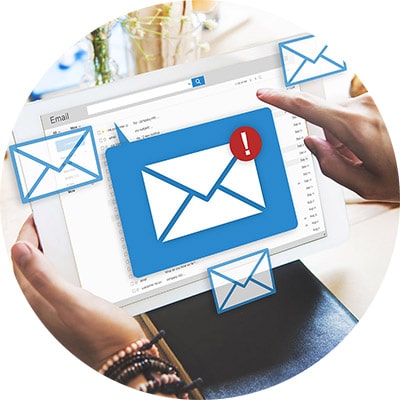
Nurture Relationships With Email.
Brands make an average ROI of $42 for every dollar spent on email marketing, making it one of the most cost-effective ways to nurture a B2C relationship.
Email is also an easy-to-sell “buy-in.” Consumers freely give their email because they want access to a tangible confirmation regarding their purchase, but it also becomes an open invitation to helpful, relevant communications in the future. (after receiving consumer permission, of course!)
Consumers also subscribe for:
- Discounts and promotions
- News and announcements
- Educational content
Setting up “drip” campaigns triggered by specific consumer behaviors is a great way to minimize the risk of users unsubscribing. For instance, after a person visits your product page, your email campaign might include a message reinforcing benefits and features, followed by a discount offer to sweeten the deal.
Another example—after someone makes an initial purchase, your email campaign may start with a welcome letter with a little more information about your company values and approach to customer service, followed by a “helpful tips” email that ensures customers get the most out of their purchase, followed by an upsell email featuring commonly purchased accessories. Seek to establish a human connection with your emails to keep subscribers for life.

Personalize for a Great Experience.
Today’s consumers expect companies to truly “know” them, despite marketing at-scale. One-to-one marketing is essential to delivering a memorable buyer experience.
Here are a few simple marketing ideas:
- Have humans (not bots) email.
- Use automation tools.
- Develop marketing personas.
- Segment email lists by persona at sign-up.
- Create persona-driven content.
- Build targeted landing pages.
- Send location-based texts.
- Craft identity-based campaigns.
Content is king when it comes to personalization. Use your content across platforms—whether it’s a dedicated landing page, a text message promotion, an email, a video, a social media post, or an app’s lookbook—to connect with unique individuals. According to Monetate, 40% of consumers buy more from retailers who personalize the shopping experience across channels.
You should consider using comprehensive CRM software by HubSpot, Salesforce, SEMRush, or Google 360. The right CRM system can level up your business and prioritize marketing activities. Companies that use CRM software see sales increases up to 29%, 34% improved productivity, and a 40% boost in forecasting accuracy.
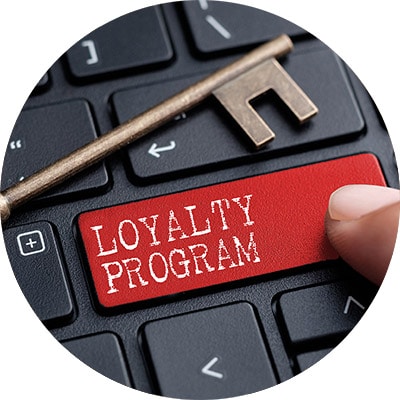
Launch a Loyalty Program.
The Edelman Brandshare report found 87% of consumers want relationships with brands, but just 17% believe brands make an honest effort to establish such ties. Since 80% of your future profits will come from the top 20% of your buyers, it makes sense to prioritize them.
A loyalty program is an ideal way to:
- Treat VIPs to exclusive offers.
- Solicit customer feedback.
- Keep buyers up-to-date.
- Track and incentivize behavior.
While launching your own loyalty program is beneficial, partnering with a third-party loyalty app can be easier and more affordable, not to mention more convenient for shoppers experiencing loyalty fatigue and/or juggling several loyalty programs. Shopkick is a mobile app that offers “kicks” (reward points) when consumers interact with partnering brands and retailers by various means.
Kicks can be earned by:
- Engaging with branded in-app content like videos and lookbooks.
- Walking into partnering retail stores.
- Seeking out featured products in-store, and physically interacting by scanning product barcodes with a mobile device.
- Making in-store purchases and submitting receipts.
- Making online purchases.
When eBay partnered with Shopkick, they were able to increase their app install rate by 6%, boost their new audience participation rate 62%, and achieve an 18% repeat-purchase rate.
Best of all, Shopkick rewards with points instead of immediate discounts, so there is no need to worry about diluting profit margins or devaluing your brand.
Drive Brand Awareness.
Awareness is the first step in reaching a bigger potential buyer market. Once you have a person’s attention, you have a chance at converting, forming a lasting relationship, and encouraging repeat purchases.
Studies have found that consumers show an overwhelming preference for brands with high awareness despite quality and price differentials, proving brand awareness to be a dominant consideration factor when shoppers are faced with a choice among various brands. Furthermore, brands in the initial consideration set can be up to 3x more likely to be purchased when compared to brands that are not in it.
You don’t necessarily need to reinvent the wheel by overhauling your entire B2C digital marketing strategy; it’s likely you can see big results by turbocharging your existing strategy through new tactics. By simplifying your message, cultivating stronger relationships, and generating more effective brand awareness, you’ll have the tools in place to powerfully compete in the saturated marketplace.
Shopkick is an omnichannel loyalty rewards app that can effectively boost your B2C digital marketing strategy. Our partners use Shopkick to increase sales, form strong relationships with repeat buyers, and expand their markets. Contact us to start your first campaign.
How top-performing Black Friday marketing campaigns will look this year

Is the Black Friday of yesteryear officially “dead” in 2020? Continue reading “How top-performing Black Friday marketing campaigns will look this year”
Department Stores Make a Comeback this Holiday Season

Shopkick survey finds consumers plan to spend most of their holiday budgets at department and apparel stores; shipping costs will impact consumers’ online shopping decisions.
Continue reading “Department Stores Make a Comeback this Holiday Season”
BOPIS retail: COVID-19’s influence on changing consumer behaviors

The period of self-containment, businesses shuttering, and isolation may be just a short blip in the grand scheme of things, but as the pandemic continues to linger on through the end of the year, its impact cannot be ignored. Continue reading “BOPIS retail: COVID-19’s influence on changing consumer behaviors”
Back-to-school shopping trends 2020: COVID-19’s effect on purchasing habits

The 2020 school year is unlike any other in U.S. history. Continue reading “Back-to-school shopping trends 2020: COVID-19’s effect on purchasing habits”

